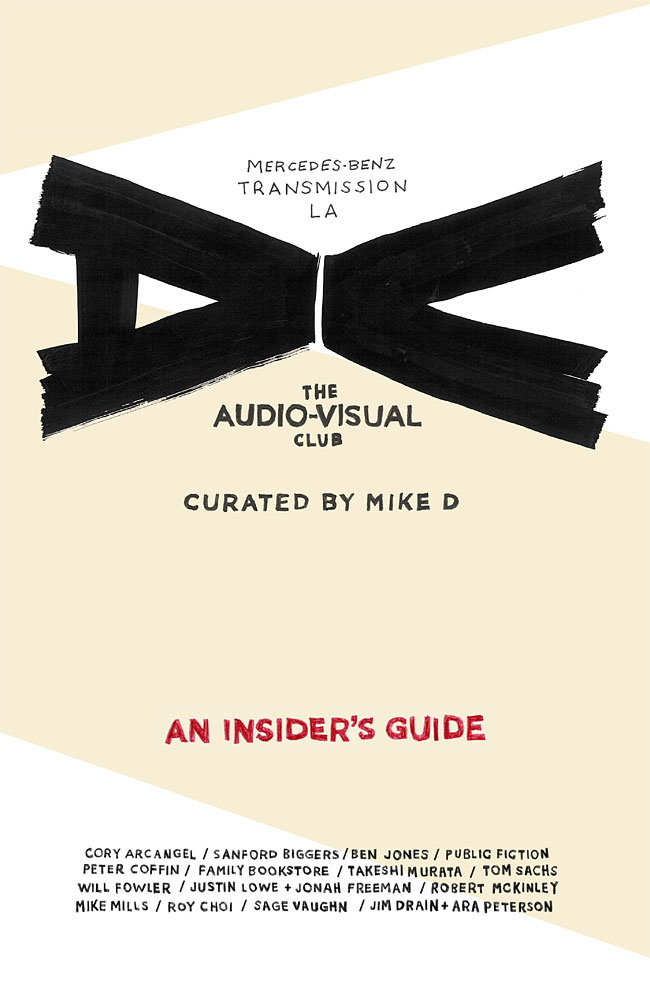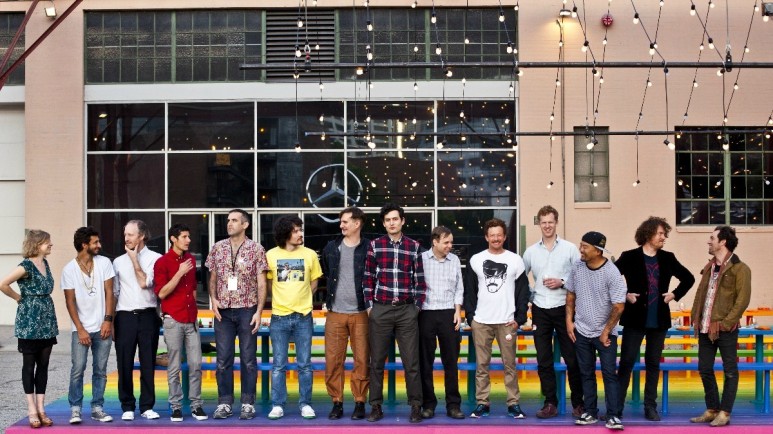When I tuned into the Art21 Telethon this past Sunday, the 8-hour performance-filled fundraising marathon had been live-streaming for just over 3 hours and brought in just under $4,000. Curator and co-host Miriam Katz, wearing a great silky floral top, was saying, “Our next act was going to be an animal act but I think there was an issue with insurance.” Instead, artist Debo Eilers’ crew was setting up nearby amidst microphones and floor mats. They were wearing white tunics like hospital gowns and red animal masks that made some look like turkeys and others like floppy-eared dogs.
“You can [perform] however long, but right now longer might be better,” said artist Ronnie Bass, the “official” host, who had conceived the telethon along with Katz and Art21 artist Tommy Hartung, after NEA budget cuts left PBS programming financially crippled.
“And since the act that didn’t come was supposed to be an animal act, if you want to put in an animal theme, that could be helpful,” Katz added.
Then everyone seemed confused for a while, and Katz accidentally blocked the camera as the group slowly began singing “You are my sunshine, my only sunshine” in childlike voices. It took a while before they were in unison. One of the performers beat the wall with a strap and held a strobe light, and continued to do this after the song ended, until Ronnie said “Thank you” and re-explained to viewers how to donate.
I tuned into the telethon right after leaving the L.A. Museum of Contemporary Art’s Geffen Contemporary, where the 19-day Transmission L.A.: AV Club, a festival funded by Mercedes Benz and curated by Beastie Boy Mike D., was on its last legs. It actually, weirdly, had a vibe similar to the telethon, a mix of confusion and free-for-all comfortability.
The festival was free, so people wandered in and out of MOCA at will. Artist Tom Sachs had designed a DJ booth that was out front, and galleries were full of video and light work (hip stuff — like Cory Arcangel and Takeshi Murata, who made even filmmaker Mike Mills, with his montage of appropriated pop images, seem like the fogey), and a black box theater in the back, where Lauren Mackler of the alt space Public Fiction had staged a series of performances. When I arrived, artists Ali Prosch and Meghann McCrory were “setting up” for their performance No Signal in Mackler’s black box. At least, I thought they were setting up — the set up turned into the performance so seamlessly that I didn’t notice at first. The artists wore all black and slowly moved scrims in front of lights, turned on projectors, and started up a fan that would rotate and cause fluttering, glittery light to move around the room.
It was a durational, always-in-progress light show that ended with disco balls and tap dancing, and people felt free to walk into and leave whenever. (A little girl gasped when one rotating black box was disassembled to reveal a disco ball, but the same little girl lost interest and was ushered away by her mother about three minutes later.)
A lot of people wandered into the performance from next door, where the new Mercedes-Benz Concept Style Coupé was on display. The Coupé had debuted the festival’s opening night, and it now sat under lights that flashed on and off to the cues of specially composed music you could listen to by putting on headphones suspended under spotlights. You could also, apparently, touch the car — I watched a young-ish blond guy in board shorts spent about five minutes trying to close the back door he’d opened while three security guards stood on with arms crossed, not helping.
Because of these cars, the strobe lights, the Beastie Boy curator, an L.A. Times article and rumors I’d heard, I was sure Transmission L.A. was a durational fundraiser, what Art21’s telethon might have been if corporately sponsored and planned by a rapper. Why else would a museum debut a luxury car in its galleries? I put this fundraiser theory in print before I realized I was wrong.
Transmission wasn’t a fundraiser. MOCA would not benefit financially (at least, not significantly). The luxury cars weren’t a sponsor’s self-promotional push, I was told. They were there to be experienced like everything else in the galleries.
“LA is all about car culture. The tricky thing is to get people out of their homes,” says Mike D. in the Transmission A.V. leaflet. “[W]e’re trying to create this all encompassing sensory-rich environment.”
It was sensory-rich, and people did come out. And it was fun to travel through the mish-mash of cultural strata and sensibilities (luxury car, DJ, performance artist) and try to understand how they related to each other. But I didn’t know who had the power (MOCA, Mercedes, Mike D., the artists?), which is why, when I went home to live-stream the telethon for the evening, I felt less antsy. There, people who cared had the power: artist were raising funds for arts programming and mostly soliciting pre-exisiting art fans to do so. Who knew a fundraiser could be a relief?







Pingback: And the Money Came Rolling in . . . Or Not. | The SuperSlinger Site